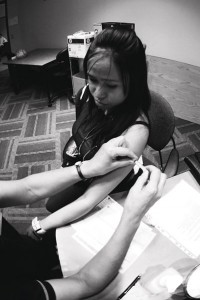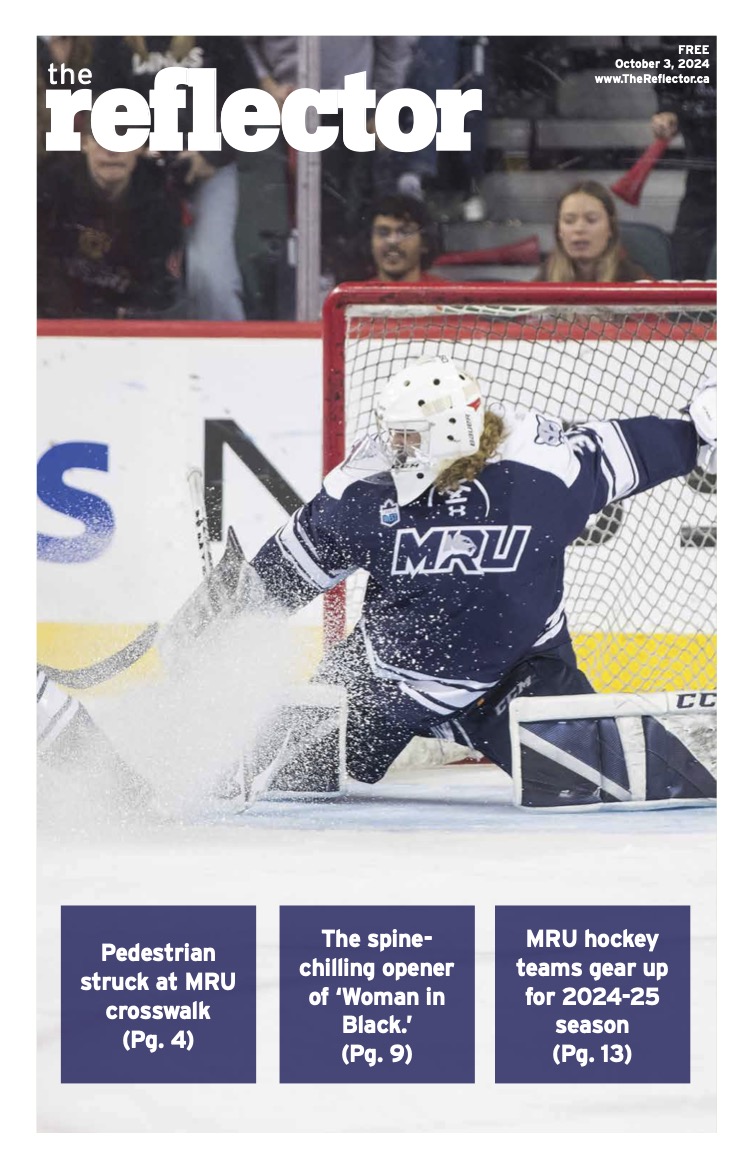Pandemic: from panic to placid
by Zoey Duncan

Photo by Josh Naud The flu shot - which protects against H1N1 and seasonal influenza - is available free to all Albertans over six months of age. Clinics run throughout Calgary; head to albertahealthservices.ca to find a clinic near you.
For some, the only reminder of last year’s H1N1 pandemic panic is the ubiquity of hand sanitizer. If you walk into an office or business without a bottle of that clear gel sitting on a desk, you’ve found an anomaly. The walls of Mount Royal University are intermittently studded with white plastic dispensers filled with enough disinfectant to put your mind at ease. For others, H1N1 is much more than the vague memory of media sensationalism and flu shot propaganda.
“I was really sick,” said Robyn Edgar, second-year bachelor of education – university transfer student. “It was disgusting. The profs were really understanding that I was incredibly sick.” Edgar was teaching a kindergarten class as part of a work placement when she caught the then-new virus, to which most people lacked immunity. Edgar calls her own immune system bad, but had never before contracted seasonal influenza and had received her annual flu shot before the H1N1 vaccine was developed in 2009.
When it was determined that she had H1N1, Edgar’s mother – a doctor – prescribed her Tamiflu, an antiviral drug that is said to reduce severity of flu symptoms. Edgar compared her H1N1 experience to having mono (mononucleosis): “I was incredibly tired, but my only sick symptoms were coughing and a lot of phlegm buildup.” She used Mount Royal’s online H1N1 Illness Registration system to register as sick so that her professors could adjust assignment deadlines as they saw fit.
When she was no longer contagious, Edgar returned to working with kindergarteners, where she quickly caught Norwalk Virus. “I got Norwalk Virus because my immune system was compromised,” she said. Norwalk Virus – colloquially known as Winter Vomiting Disease – causes vomiting and diarrhea, is similar to food poisoning and is frequently passed around in schools, according to the Mount Sinai Hospital in Toronto. “And then I got pneumonia as a result of the H1N1, and then strep throat because the pneumonia virus moved up into my throat.”
Somehow, though, Edgar managed to complete a six- class semester, a feat that now impresses her. “I don’t think I could even do it healthy right now,” she conceded. This year, the Mount Royal flu clinic had 1,000 doses of a combined H1N1 and seasonal influenza vaccine – double what the school has had in the past, said Peter Brodsky, communications director. “(Alberta Health Services is) not anticipating a resurgence of H1N1 to the extent of last year,” Brodsky said.
With that in mind, Mount Royal will not be using the H1N1 registration site that was created last year to track absent students, Brodsky said. Typically three to four per cent of students are absent due to influenza during flu season, which runs from November to April, with the most infections arising around the December exam period, Brodsky said. Edgar – who got the new combined shot in early October – has simple advice for those hoping to avoid illness this fall: wash your hands.
“A lot of people do the under the tap and (are) like, ‘OK, I’m good to go,’ ” she said. “You should actually do 30 seconds of washing your hands with soap and hot water.” Mount Royal’s flu clinic ran from Oct. 18 to 22, but clinics continue throughout the city. Visit www. albertahealthservices.ca to find a clinic near you; all Albertans over six months old are eligible for the combined H1N1 and influenza shot at no charge.




